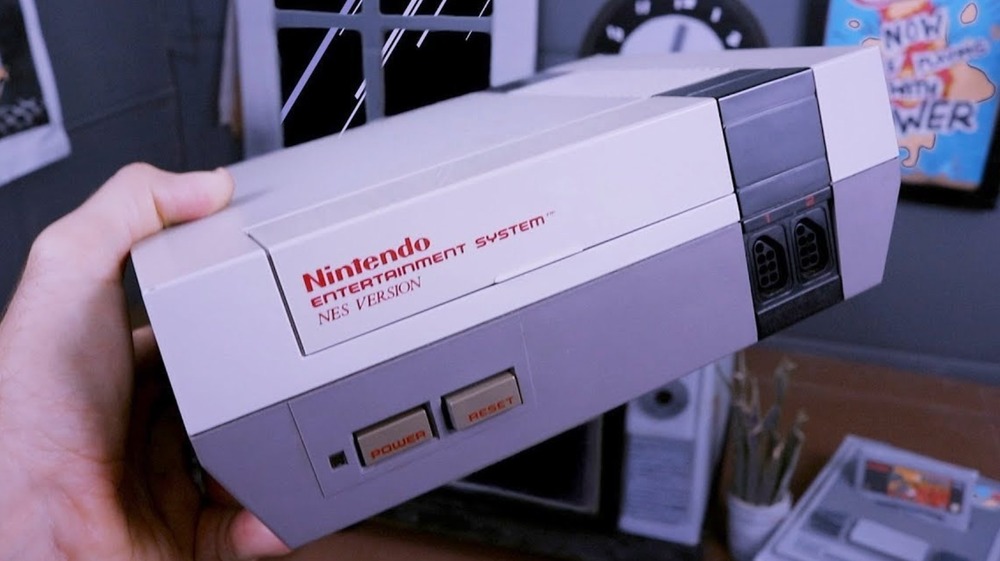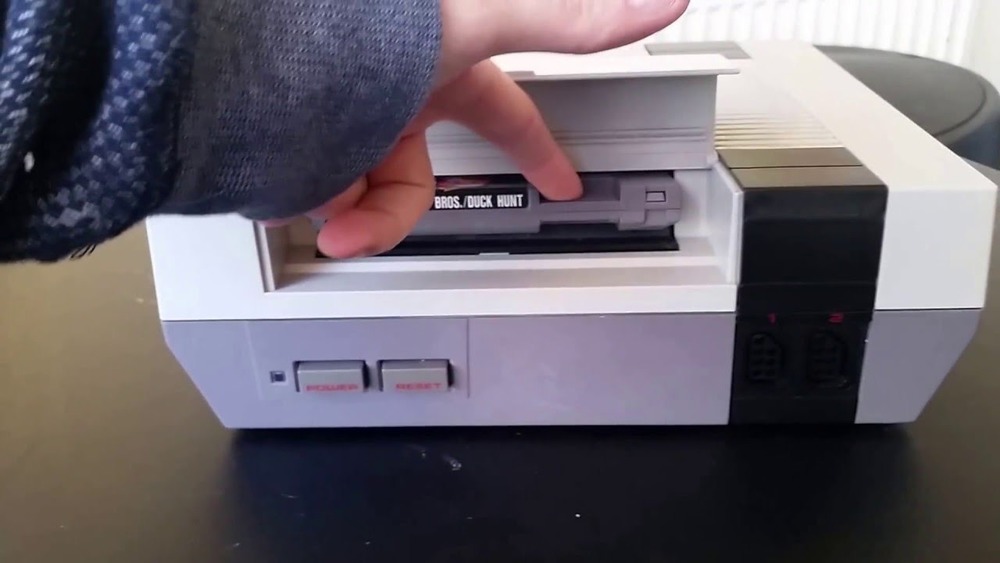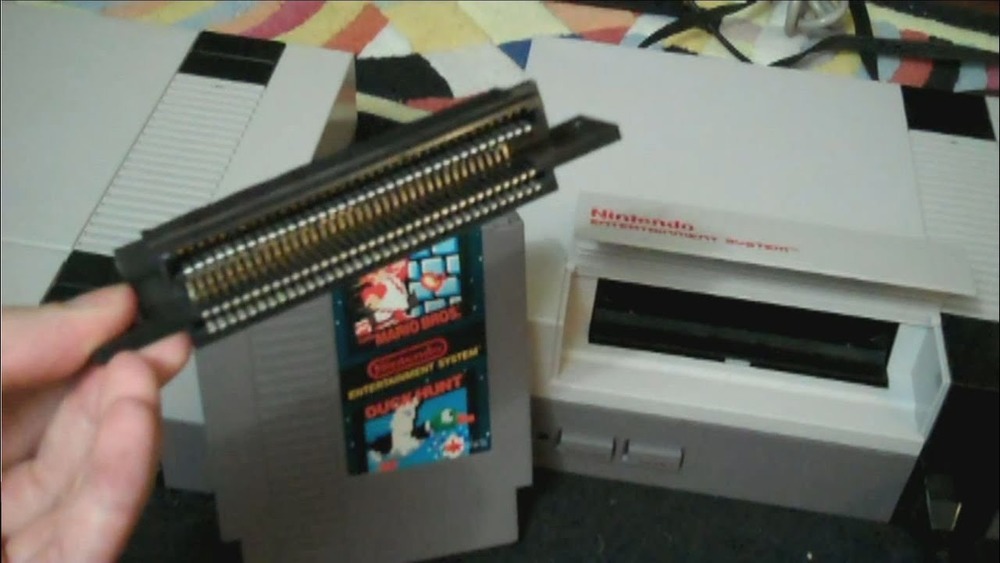The Major Design Flaw Nintendo Made With Its American NES
The original Nintendo Entertainment System — called the NES for short — served as the host to a number of fondly remembered titles. If you played on one back in the day, you might recall shooting down some ducks (and absolutely hating that evil little dog) in Duck Hunt. You might have poured hours upon hours into uncovering every little secret in the first Super Mario Bros. But it wasn't all fun and games with the NES when it came to actually getting the cartridges to work.
One of the other memories NES owners have — aside from enjoying some real classics — is the blinking screen they'd see on occasion. You'd see the title screen, then nothing, then the title screen, then nothing. This issue prevented lots of games from being played, and led to lots of gamers performing some strange rituals in hopes of getting their cartridges to work. But the problem wasn't actually the game itself; instead, the flashing screen was actually the result of a major design flaw with the American NES.
Here's where Nintendo went wrong with the American NES design.
Blowing didn't actually do anything
Blowing inside the NES. Blowing inside the cartridge. Some who owned an NES genuinely believed these actions could help to get a finnicky console or game working. Some thought dust was to blame, and that a targeted burst of air would somehow make things right. It didn't really do anything at all, though, except create an entire generation of gamers who try to blow inside everything that isn't working properly.
As it turns out, the blowing didn't really address the core issue of this particular NES design flaw. If someone did this, and the game started working after, that was actually more a credit to dumb luck than anything actually being fixed. The real problem wasn't anything to do with the game cartridge, nor was the blinking screen typically attributable to dust or debris. It was actually something fundamentally wrong with the console: a choice Nintendo made that really came back to bite it.
The problem was the connector
You might recall that, in the old Nintendo Entertainment System design, gamers would lift open a flap and push a cartridge into the available slot. The act was similar to putting a VHS tape into a VCR. Prolific gamers would engage in constant swaps of cartridges, pushing them in and pulling them out again. Over time, the connector pins located inside the NES would wear out and lose some of their ability to make a connection with the corresponding pins on a cartridge.
This breakdown is ultimately what caused NES owners so much grief while trying to play games. Nintendo ultimately rectified the issue when it finally released the top-loading version of the console. So if you ever pull your Nintendo Entertainment System out of the closet and you have some trouble playing games, resist the urge to blow on everything. Instead, look into potentially replacing the connector inside the machine — that is more likely the culprit preventing you from experiencing a little old-school Tecmo Bowl.



